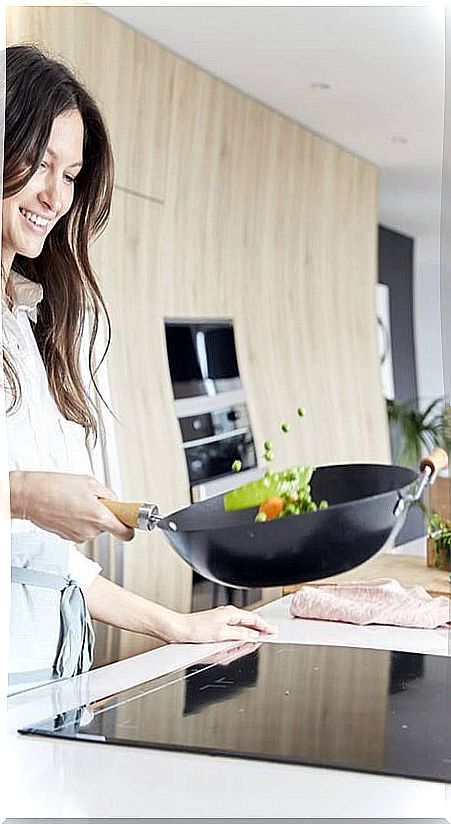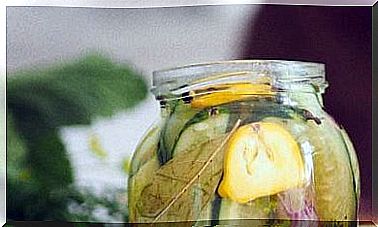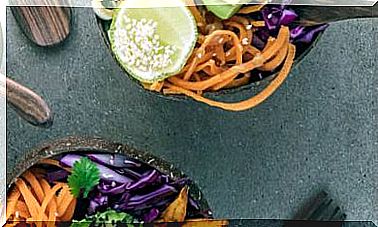15 Things I Wish I Had Known When I Started Cooking
Everyone knows how to boil a pasta dish, but if we want to cook for real, we may make a number of beginner mistakes.

When we start cooking we have a lot of doubts and there are things that cost us because we do not know or practice correct techniques or do not know the ingredients.
Cooking tips for beginners
Today I am going to give you some very simple and basic tips that can make your life easier if you are just starting out.
1. You don’t need all the kitchen accessories you see, just a few
A table, a proper knife, a grater and a mixer are enough to make all kinds of basic dishes. You don’t need a thousand shape cutters, weird juicers, torches, or siphons.
2. Do not put the spices on top of the extractor or on the stove.
Better keep them in a cabinet next to them, where neither steam from cooking nor heat from the stove enters. This way they will last longer and with a better aroma.
3. Do double
Rice, quinoa, legumes in general, millet … It takes the same time to make a cup as to make two, so double it and store what is left in the fridge, so you will have ready-made ingredients for the next meals.
4. Taste your meals while you make them
When in doubt, use a spoon to taste a little broth, sauce or ingredient (that is already cooked). It is better to start with a bland dish and correct it than go overboard with salt.
The same with the rest of the flavors that we are incorporating: spices, sauces, etc.
5. Minced garlic burns quickly
When you are going to make a sauce or a base for any dish, do not put the minced garlic first because it will end up burning. Put the onion, leek, carrots, peppers, etc. first, and the garlic later, before adding liquids.
6. Caramelized onion should not contain sugar
It can be frustrating waiting and waiting until it’s done, but it’s the best way to make caramelized onion. For starters, don’t make a single onion, make 3 or 4. It takes almost the same time, and with what it reduces it comes to nothing.
To make caramelized onion : peel the onion and cut it into thin strips. Put it in a large skillet with a pinch of oil and a pinch of salt over medium heat. When it starts to brown, stir it well and put it on a low heat. Stir every 5-6 minutes until completely caramelized (takes 20-40 minutes).
You don’t have to be looking at it all the time, just keep an eye on it and stir it from time to time. What you can add is a pinch of salt and a pinch of bicarbonate (approx ⅛ teaspoon for 3-4 onions), since raising the pH makes them caramelize faster.
7. For the vegetables to brown, stop moving them
If you want some vegetables al dente, golden on the outside but still crisp and that retain their color, cook them on a higher heat, sautéing them from time to time, but leaving them in contact with the pan. If not, it is impossible for them to brown.
8. Use frozen without the puddle of water
If we add frozen vegetables or mushrooms directly to the pan, it is easy that after a while they release the internal water that had frozen. If you want to avoid this, let them thaw early in the fridge and drain them before using.
9. Marinate while you’re away
Marinate tofu, textured soybeans, seitan, tempeh, or greens before going to work. When you return you will only have to do it grilled.
10. Soak while you sleep or while you’re away
It has always been said of legumes to “soak overnight.” It is the custom, but we no longer get up to put the pressure cooker at 8 in the morning, rather we get up and go to work or fulfill other obligations.
When you say “all night” it is about 8 hours. Legumes in general you can leave them longer, especially if you work part-time. Before leaving, let them soak, when you return you just have to put them in the pressure cooker and let them cook.
11. Use the right utensils and accessories
- Put parchment paper on the baking sheets when roasting vegetables, seitan, etc .; he cooks with that same paper “en papillote”; also use it to line bread molds so that it does not stick.
- Use small molds to make cakes and breads (20 cm in diameter or less).
- Use the large pans to grill lots of veggies.
- Remove hot trays from the oven with heat-insulating mitts (not badly folded rags).
- Flip the vegetables with a pair of kitchen tongs, not a fork.
12. Let cool before cutting
When making cakes and tarts, let them cool completely before cutting them. The internal structure is much more delicate when it is hot and it can seem doughy. Once cold you can cut it and serve it, it will have a much better texture.
13. Any stew, stew, soup or broth tastes better with sofrito
And make it homemade, not bought, with ingredients that you were going to put anyway or that go well with your preparation. It is not necessary to add tomatoes to all the stir-fries, you can do it with onion, shallots and leeks, with onion, carrot and peppers, etc. Don’t forget the spices and a pinch of salt.
14. Mise en place
When in doubt, before cooking a recipe, take out all the necessary ingredients and prepare them (peel, cut, wash, etc.), so you will see if you have everything, if it is enough, and enough time to read the instructions and add the ingredients without rush.
15. Clean on the go
Cooking is great, but cleaning is not so cool. To make it more bearable, clean on the go.
Every time you cut a type of vegetable on the table, wipe it with a clean and damp cloth, and in the process wipe the counter if any pieces have fallen. When you’re done with the board and knife, wash them in a moment.
The same with the bowls and utensils you have used. So later you will only have to wash the dishes in which you have served it and the container in which you have cooked it.
Allow pans and saucepans to cool before putting them on the sink to wash.









